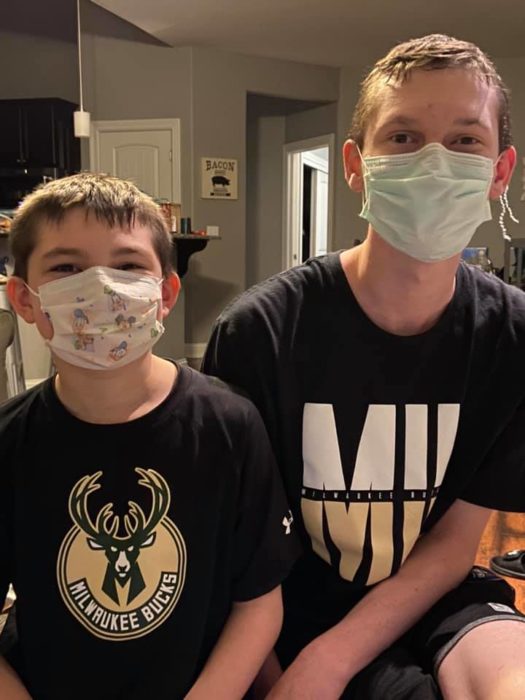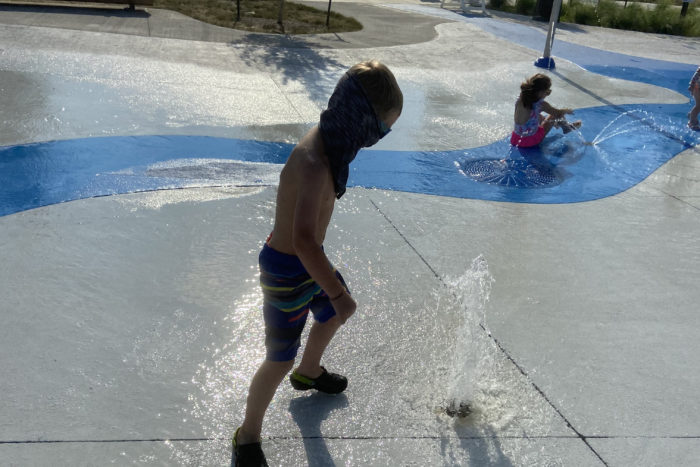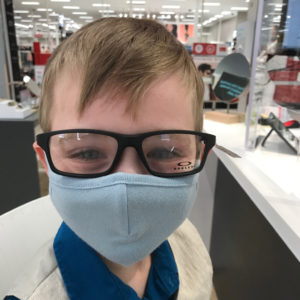This blog was updated on October 14, 2020.
Many of our communities have opened up to varying degrees during the past few weeks – and right at the time that summer temperatures are climbing. New safety measures for living in this COVID-19 world may bring extra challenges for people affected by ectodermal dysplasias.
Chilling in Line
Many individuals who are affected by ectodermal dysplasias have the inability to sweat. If this is you or your child, you need to plan ahead if you need to go to a business where you may have to stand in a line outside of the building waiting your turn to enter. Lines may be on hot parking lots or sidewalks without access to shade.
Here are some suggestions to help you stay cool and prevent your body temperature from getting too elevated.
- Patronize businesses that offer early hours for seniors and individuals at high risk to avoid lines.
- Avoid going out in the heat of day.
- Be sure to drink water and have water with you to prevent overheating. Always take a spray bottle filled with water and spray yourself as needed to cool off.
- If your child can’t sweat, consider having him or her wear a cooling vest.
Wear Your Face Covering
We encourage families to follow the guidelines from the Centers for Disease Control and Prevention when it comes to COVID-19. They recommend that people 2 years of age and older wear cloth face coverings in public settings and when around people who don’t live in the same household.
Face coverings may prevent people who have COVID-19 from spreading the virus to others and are most likely to reduce the spread of COVID-when they are widely used by people in public. You can read more about their importance on the CDC website.
Different families say the masks cause them to overheat while others are wearing masks – inside and outside – without having any issues.
Help Your Child Adjust
Help your child get used to wearing a mask by practicing in different settings. For example, you could have them play outside with their mask on for a certain period of time. Then, gradually add time to help them build up to wearing it for an extended period of time. Start practicing as soon as possible so you and your children are ready for school or other social settings.

Becky Abbott, an NFED mom, said that both of her sons (one of whom has hypohidrotic ectodermal dysplasia and doesn’t sweat) have worn masks to doctor appointments most of their lives and done well.
“I would suggest that being comfortable with a mask is all about the execution and education that goes into preparing children for wearing masks,” Becky said. “If parents explain the importance and consistently remind their children why they need to wear them, it is helpful. If my 8-year-old can wear a mask for hours without complaining or fidgeting with it, most kids can do it. Practice, education, and persistence will make a considerable difference.”
You may need to experiment with different types of face coverings to find one that best works for you, said Dr. Cynthia Carver DeKlotz, a dermatologist on the NFED’s Scientific Advisory Countil.
Additional Resources
The Mayo Clinic has great information that explains the different types of masks and how well they work. You can also learn about wearing, washing and adjusting masks. Johns Hopkins publishes information about how to properly wear a face mask. Plus, learn how to make your own masks for adults and children with patterns they provide.
If you are a healthcare worker with ectodermal dysplasia who has to wear an N95 mask for your job, the American Academy of Dermatology has a great resource for taking care of your skin.
Here are some tips that may help you with wearing a face covering and overheating.
- Choose a mask that is lightweight material such as cotton or cloth to help prevent overheating.
- Choose a mask that is a light color so it will absorb less of the sun’s heat.
- Some people have said they prefer gaiter style face coverings. With this style, it’s a band that you wear around your neck and then pull up to cover your nose and mouth. However, Dr. DeKlotz said this style might increase the risk of overheating because it can cover much of the face and neck, so choosing the right material to decrease risks and monitoring for adverse signs can be important. According to the CDC, evaluation is ongoing for gaiters and their effectiveness is unknown at this time.

Jen Steele whose two children have diminished sweating said they have used the Mission cooling gaiter. The company offers children and adult sizes. You soak this towel in water and then “snap it” and it creates a cooling effect. Arctic Cool also offers similar cooling face gaiters.
Masks and Skin Irritation in Goltz Syndrome
We have heard from families affected by Goltz syndrome that wearing a mask has caused their skin to break down. Dr. DeKlotz said that if a skin wound develops from the elastic ropes or any portion of the mask, you should consult with your doctor.
The treatment may be different depending on the location of the wound. However, if it’s not near sensitive areas such as your eyes, you likely could try remedies that you would use on other parts of the body. Again, you should consult your physician, said Dr. DeKlotz.
You could consider using foam or soft pads that are used for wound care and adapt them to the mask to attempt to relieve pressure and prevent a wound from developing. Do not adapt an N95 mask as then it does not meet the criteria to be an N95 mask, she said.
How to Prevent Skin Irritation
Also, Dr. DeKlotz states that in general, to protect skin from irritation, it is important to follow a gentle skin care routine. Although this may vary for individuals, you could try cleansing the skin with a gentle face wash, applying non-comedogenic face moisturizers (e.g., CeraVe AM or PM) after washing, and applying mineral oil or petrolatum-based ointments (e.g., CeraVe Healing Ointment, Vaseline) after wearing a mask or at bedtime to help heal mildly irritated skin.
Be sure and wash reusable face masks after each use in warm water to get rid of germs and bacteria that could irritate the skin.
Stay Safe
Whether you have ectodermal dysplasia or not, or whether or not you can’t sweat, getting used to wearing a mask takes time. But, the benefits for your safety and that of others are too great to not wear one. We’ll continue to seek ways to help you stay safe and keep informed about the coronavirus.
